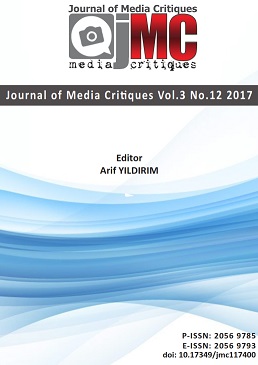Questioning Ethnorace in the Likability of Television and Film Characters: Who and What Do Young Audiences Find Likable?
Questioning Ethnorace in the Likability of Television and Film Characters: Who and What Do Young Audiences Find Likable?
Author(s): Adolfo Rafael MoraSubject(s): Social differentiation, Film / Cinema / Cinematography, Ethnic Minorities Studies, Sociology of Art, Identity of Collectives
Published by: University of Lincoln and World Experience Campus Foundation
Keywords: audience; ethnicity; gender; likability; marginality; race; social identity;
Summary/Abstract: Through student essays, this study examined the likability that young adults in the US had for television and/or film characters—both fictional and/or real—across three scenarios: (1) with a disliked character who shared the ethnic or racial identity of the participant, (2) with a likable character who was an ethnic or racial minority characters, and (3) between their utmost liked and disliked TV/film character regardless of their ethnic/racial identification. The likability of TV or film characters was dependent on their inner attractiveness – a characterization based on selflessness, friendliness, and interpersonal empathy. Ethnicity and/or race became a salient factor for ethnoracial minorities when they wrote about dislikable ingroup characters, because these social identities were associated with outer unattractiveness – that is, characterizations relating to appearance and speech that stereotyped and devalued them in the narrative. When asked to contrast likable and dislikable characters, participants rarely questioned them according to ethnic or racial qualities, and social identities like gender was likely to guide their discussions. Study findings captured the onscreen marginality that ethnic/racial minorities and/or face, and the manners in which audiences shift between personal and social identities to make sense of media experiences.
Journal: Journal of Media Critiques
- Issue Year: 3/2017
- Issue No: 12
- Page Range: 11-29
- Page Count: 19
- Language: English

